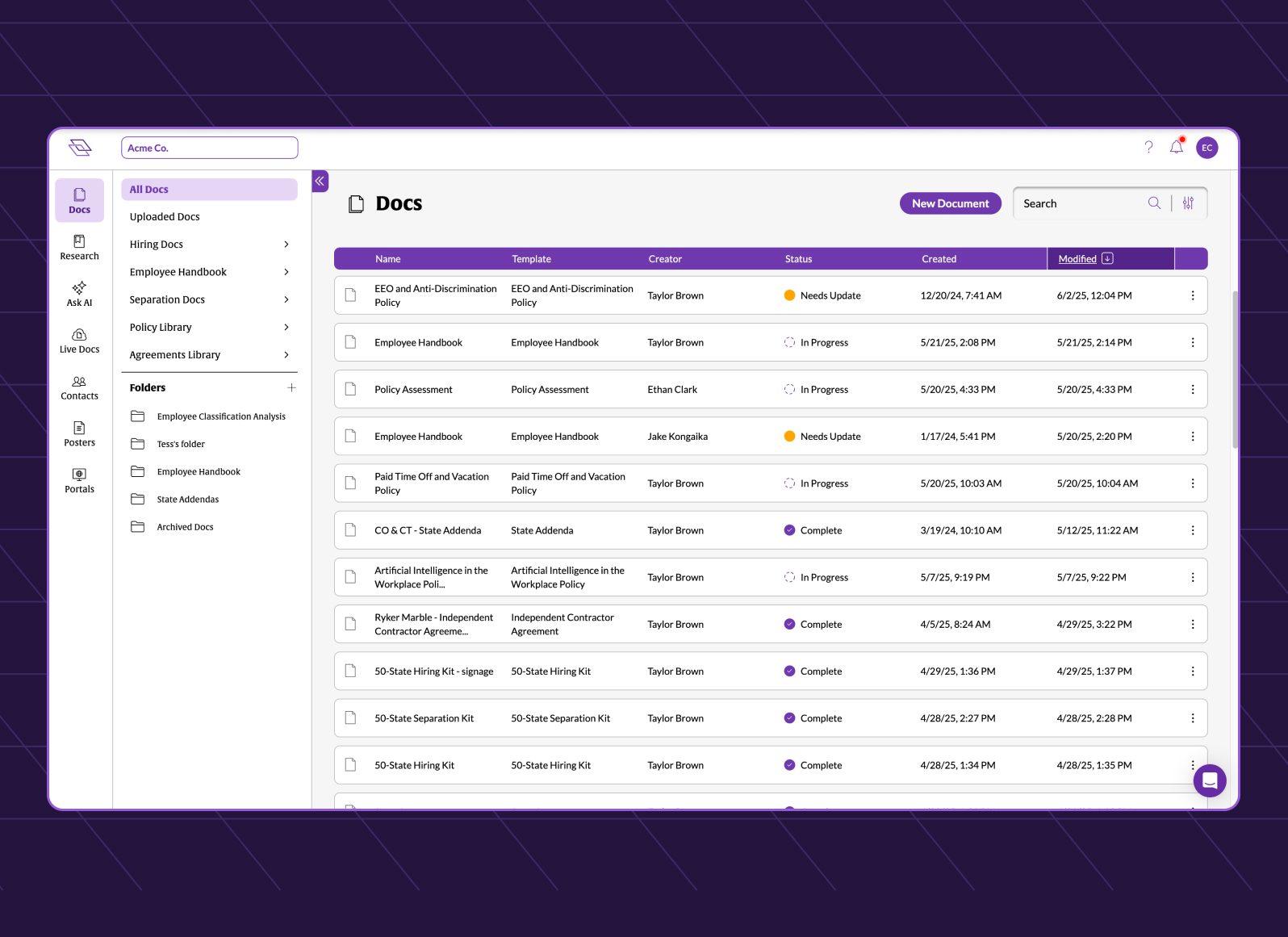To be an independent contractor, or not to be? This is the question.
Classifying workers as employees or independent contractors has become a hot topic among policymakers, businesses, and workers in the ever-evolving workforce. The United States Department of Labor (DOL) recently unveiled a final rule that changes the standard for determining a worker’s status under the Fair Labor Standards Act (FLSA).
The new rule doesn’t provide clear guidance for employers–there’s no black and white line between contracts and employees that employers can rely on. This leaves employers in a tough spot, but there are steps they can take to make sure they’re classifying workers property.
Employers must reevaluate their contractor relationships under the new rule to avoid the risk of costly litigation, tax penalties, and fines. Here’s what you need to know about the rule and its implications for businesses.
The evolution of independent contracting
Independent contracting has long been a cornerstone of the American economy, providing opportunities for individuals to work on a project-by-project basis without the constraints of traditional employment.
However, the rise of the gig economy and the proliferation of digital platforms have blurred the lines between traditional employment and independent contracting, leading to confusion and disputes over classification.
Historically, the classification of independent contractors has been determined by various factors, including the degree of control exerted by the employer, the level of skill required for the work, and the presence of a written contract. However, inconsistencies in interpretation and enforcement have resulted in litigation and uncertainty for both businesses and workers.
The DOL’s new rule for independent contractors
The DOL’s new rule, effective March 11, 2024, establishes an updated framework for determining whether a worker should be classified as an employee or an independent contractor under the FLSA.
According to the DOL, the new rule is more closely aligned with the longstanding judicial interpretation of the FLSA and establishes an “economic reality” test, which evaluates the following six primary factors to determine whether a worker is economically dependent on an employer for work (and is an employee) or is in business for themselves (and is an independent contractor):
- Opportunity for profit or loss: Independent contractors can typically profit from their efforts or incur financial losses based on their business decisions. This factor evaluates the degree of financial risk assumed by the worker.
- Investments by the worker and the potential employer: This factor looks at whether the worker is investing capital (i.e., equipment) in the work, or whether it’s the potential employer that is making the investments in the work.
- Permanence of the relationship: The duration and continuity of the working relationship between the employer and the worker are examined to determine whether it resembles that of an employee or an independent contractor. An open-ended relationship looks more like an employment relationship.
- Nature and degree of control: This factor assesses the extent to which the employer dictates the manner and means by which the work is performed. The less control exerted by the employer, the more likely the worker will be classified as an independent contractor.
- Extent to which the work is an integral part of the business: This factor assesses the degree to which the worker’s services are integrated into the employer’s business operations. Independent contractors typically provide specialized services that are separate from the core functions of the business.
- Skill required: The skill level needed to perform the work is a crucial consideration in determining independent contractor status. Highly skilled workers who exercise independent judgment are more likely to be classified as independent contractors.
Under the new test, all six factors are considered equally–none is more important than the other.
What changed from the previous rule?
The prior rule focused on two “core” factors–“the nature and degree of the worker’s control over the work” and “the worker’s opportunity for profit or loss.”
If these two factors suggested a contractor or employment relationship, there was no need to consider any other factors. Many legal observers believe that the prior rule was easier for employers to implement because in most cases, they only needed to consider two factors.
Now, employers will need to look at all six factors and weigh them to determine the worker’s classification. The DOL’s new rule also acknowledges that some of these factors may be more relevant than others in certain cases, and that this six-factor list is not exhaustive, possibly requiring additional inquiries.
The implications of the new independent contractor rule for businesses
The DOL’s new rule has significant implications for businesses that rely on independent contractors:
- Companies should consider auditing their existing independent contractor relationships and making sure those workers shouldn’t be reclassified as employees. Misclassifying employees as contractors can result in large legal and tax fines, employment lawsuits, liability for back pay and benefits, payments for misclassified workers’ compensation claims, and a host of other penalties.
- Some changes employers may need to make could involve reevaluating contractual agreements, modifying work arrangements, or reviewing work descriptions. When examining existing contractor relationships, it’s vital that employers honestly evaluate whether a worker is economically dependent, weighing all six factors equally.
- If employers reclassify contractors as employees, they should be aware of any coverage thresholds for employee benefits and leaves under federal, state, or local law that they may now be required to provide due to having more employees. For instance, employers with 50 or more employees at a worksite are covered under the Family and Medical Leave Act (FMLA) and must provide job-protected family and medical leave to their employees.
Stay compliant with new independent contractor rules with SixFifty
The DOL’s new rule on independent contractor classification marks a significant milestone in the ongoing debate over labor rights and the gig economy. The rule aims to reduce ambiguity, promote compliance, and protect workers’ rights by establishing guidelines for determining independent contractor status. Whether the rule succeeds in promoting that goal remains to be seen.
Businesses must familiarize themselves with the criteria outlined in the new rule and take proactive steps to ensure compliance with their independent contractor agreements.
If you’re feeling overwhelmed by your ability to audit your processes and agreements on your own, SixFifty’s Employment Docs software can help your organization protect itself by including the right terms in its agreements with independent contractors. Contact us today to learn more about how our tools can help you prevent misclassifying your workers.


